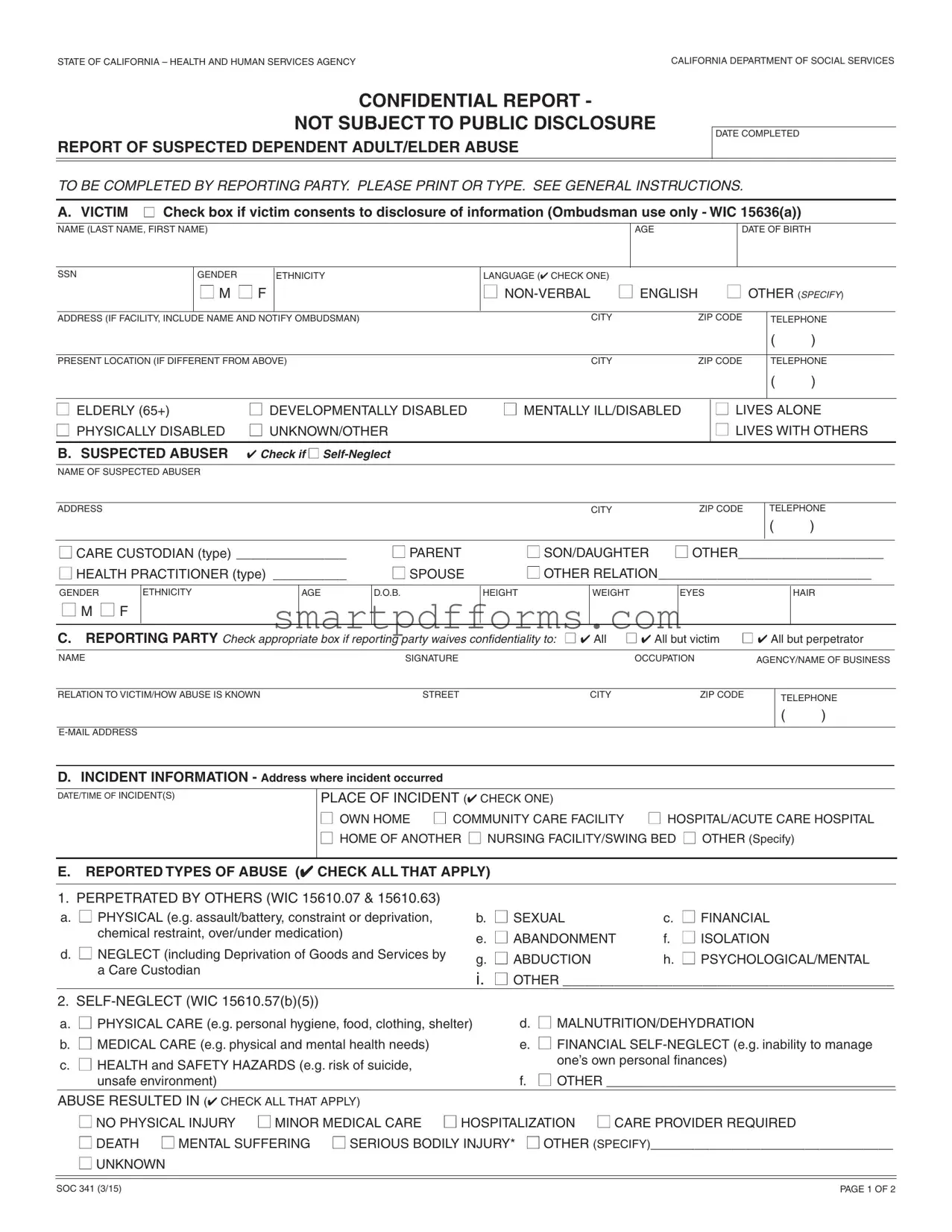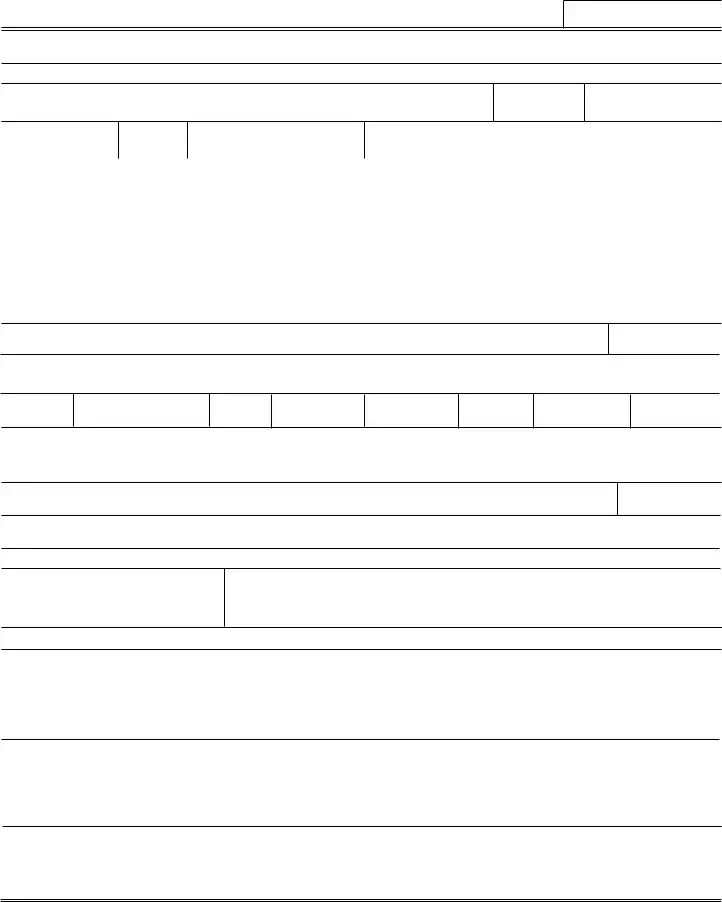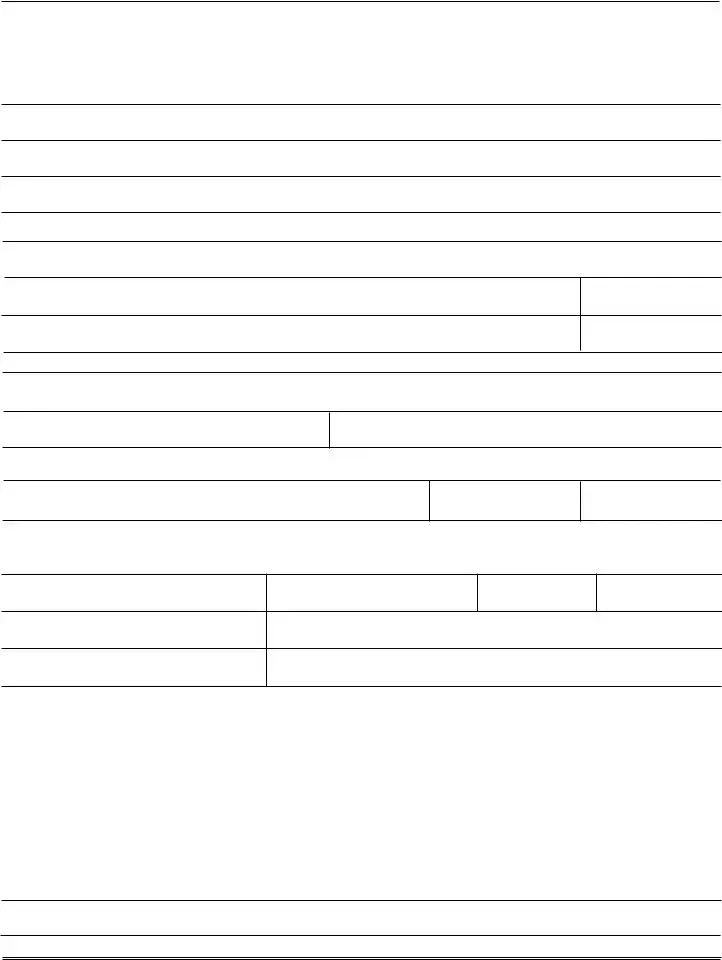•If the abuse occurred in a state mental hospital or a state developmental center, mandated reporters shall report by telephone or through a confidential Internet reporting tool (established in WIC Section 15658) immediately or as soon as practicably possible and submit the report within two (2) working days of making the telephone report to the responsible agency as identified below:
•If the abuse occurred in a State Mental Hospital, report to the local law enforcement agency or the California Department of State Hospitals.
•If the abuse occurred in a State Developmental Center, report to the local law enforcement agency or to the California Department of Developmental Services.
•For all other abuse, mandated reporters shall report by telephone or through a confidential Internet reporting tool to the adult protective services agency or the local law enforcement agency immediately or as soon as practicably possible. If reported by telephone, a written or an Internet report shall be sent to adult protective services or law enforcement within two working days.
REPORTING PARTY DEFINITIONS
Mandated Reporter (WIC Section 15630 (a)) Any person who has assumed full or intermittent responsibility for care or custody of an elder or dependent adult, whether or not that person receives compensation, including administrators, supervisors, and any licensed staff of a public or private facility that provides care or services for elder or dependent adults, or any elder or dependent adult care custodian, health practitioner, clergy member, or employee of a county adult protective services agency or a local law enforcement agency, is a mandated reporter.
Care Custodian (WIC Section 15610.17) means an administrator or an employee of any of the following public or private facilities or agencies, or persons providing are or services for elders or dependent adults, including members of the support staff and maintenance staff: (a) Twenty-four hour health facilities, as defined in Sections 1250, 1250.2, and 1250.3 of the Health and Safety Code; (b) Clinics; (c) Home health agencies; (d) Agencies providing publicly funded in-home supportive services, nutrition services, or other home and community-based support services; (e) Adult day health care centers and adult day care; (f) Secondary schools that serve 18- to 22- year-old dependent adults and postsecondary educational institutions that serve dependent adults or elders; (g) Independent living centers;
(h)Camps; (i) Alzheimer's Disease Day Care Resource Centers; (j) Community care facilities, as defined in Section 1502 of the Health and Safety Code, and residential care facilities for the elderly, as defined in Section 1569.2 of the Health and Safety Code; (k) Respite care facilities; (l) Foster homes; (m) Vocational rehabilitation facilities and work activity centers; (n) Designated area agencies on aging;
(o)Regional centers for persons with developmental disabilities; (p) State Department of Social Services and State Department of Health Services licensing divisions; (q) County welfare departments; (r) Offices of patients' rights advocates and clients' rights advocates, including attorneys; (s) The Office of the State Long-Term Care Ombudsman; (t) Offices of public conservators, public guardians, and court investigators; (u) Any protection or advocacy agency or entity that is designated by the Governor to fulfill the requirements and assurances of the following: (1) The federal Developmental Disabilities Assistance and Bill of Rights Act of 2000, contained in Chapter 144 (commencing with Section 15001) of Title 42 of the United States Code, for protection and advocacy of the rights of persons with developmental disabilities; or (2) The Protection and Advocacy for the Mentally Ill Individuals Act of 1986, as amended, contained in Chapter 114 (commencing with Section 10801) of Title 42 of the United States Code, for the protection and advocacy of the rights of persons with mental illness; (v) Humane societies and animal control agencies; (w) Fire departments; (x) Offices of environmental health and building code enforcement; or (y) Any other protective, public, sectarian, mental health, or private assistance or advocacy agency or person providing health services or social services to elders or dependent adults.
Health Practitioner (WIC Section 15610.37) means a physician and surgeon, psychiatrist, psychologist, dentist, resident, intern, podiatrist, chiropractor, licensed nurse, dental hygienist, licensed clinical social worker or associate clinical social worker, marriage, family, and child counselor, or any other person who is currently licensed under Division 2 (commencing with Section 500) of the Business and Professions Code, any emergency medical technician I or II, paramedic, or person certified pursuant to Division 2.5 (commencing with Section 1797) of the Health and Safety Code, a psychological assistant registered pursuant to Section 2913 of the Business and Professions Code, a marriage, family, and child counselor trainee, as defined in subdivision (c) of Section 4980.03 of the Business and Professions Code, or an unlicensed marriage, family, and child counselor intern registered under Section 4980.44 of the Business and Professions Code, state or county public health or social service employee who treats an elder or a dependent adult for any condition, or a coroner.
Any officer and/or employee of a financial institution is a mandated reporter of suspected financial abuse and shall report suspected financial abuse of an elder or dependent adult on form SOC 342, “Report of Suspected Dependent Adult/Elder Financial Abuse”.
MULTIPLE REPORTERS
When two or more mandated reporters are jointly knowledgeable of a suspected instance of abuse of a dependent adult or elder, and when there is agreement among them, the telephone report may be made by one member of the group. Also, a single written report may be completed by that member of the group. Any person of that group, who believes the report was not submitted, shall submit the report.





